Do you all remember Dana Fairbanks, professional tennis player from the L word who struggled the most with coming out? She feared to imagine how her friends, her republican parents, her fans and sponsors would react, whether she lose her supporters or not. But Dana had a moment and decided to come out. Did it ruin her career? No. And how about all this in the real world? Are there lesbian* tennis players? Let’s explore the professional world of this almost 500-year-old sport.
Who would have thought that King Henry VIII was already a big fan and also a player of tennis in the 16th century? Women’s tennis had to wait 400 years for the first match to be played for money (1926), then, after only occasional tours and exhibition matches, some more decades for WTA (Women’s Tennis Association) to be formed in 1973 - envisioned by none other than Billie Jean King.
Early lesbian icons

As in other sports, women would have to play tennis, too, in men’s shadows: they had less opportunities to play and earned much less prize money in the same tournament. However, 1973 was a turning point for women tennis players in many aspects: after the foundation of WTA in 1973, the U.S. Open made history by offering equal prize money to men and women. In the famous Battle of the Sexes exhibition match against the vocally sexist Bobby Riggs in September 1973, Billie Jean King brought even more media attention to tennis and to women professionals in all walks of life. Riggs, former tennis legend had opined that the female game was inferior, and at his current age of 55 he could still beat any of the top female players.
Riggs first challenged the 29-year-old Billie Jean King, but when she declined, Margaret Court stepped in. After Court’s loss King didn’t have a choice but to accept the challenge, and beat Riggs 6–4, 6–3, 6–3.
This massively important match has inspired filmmakers from time to time. The latest movie was released last year starring Emma Stone and Steve Carell as King and Riggs, respectively. In addition to the film’s focus on King’s titular match against Bobby Riggs, it presents her fear from social and economical penalties, as it depicts her affair with Marilyn Barnett. Her fear was not irrational: Barnett later outed King in a 1981 palimony suit, which drove away sponsors of women’s tennis.
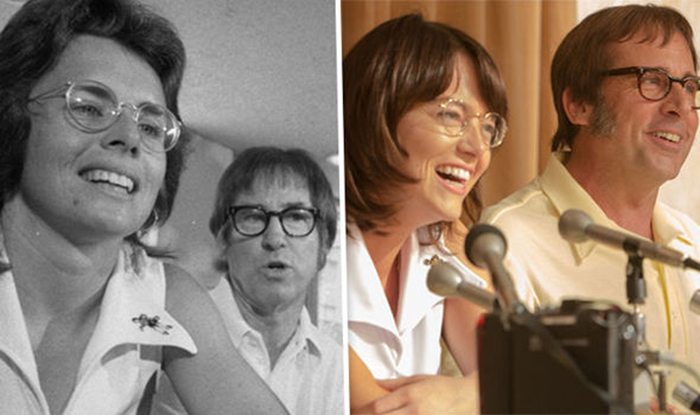
Today we see King as a lesbian heroine, same as Martina Navratilova. It was also in 1981 that shortly after becoming a United States citizen, Navratilova gave an interview to New York Daily News (in the process of acquiring US citizenship non-heterosexual orientation was a disqualifier at the time). She came out as bisexual but asked the reporter not to publish the article until she was ready to come out publicly. However, the newspaper didn’t respect her request and published the article prior to her permission. Although she lost sponsors similar to King, Navratilova didn’t regret coming out, moreover, she said it made her a better tennis player as she finally felt free, not having to pretend or speak about who she was.
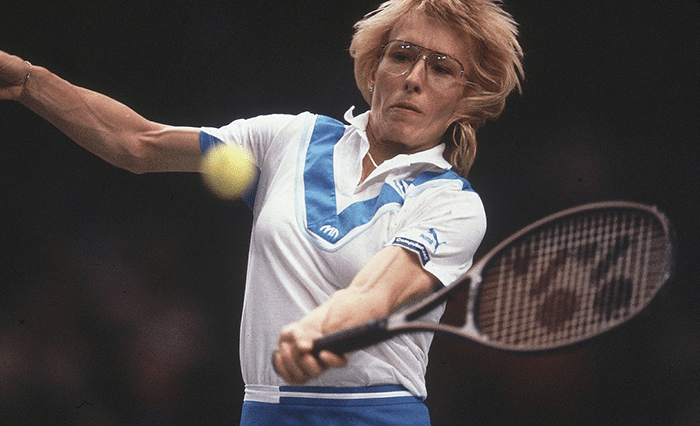
There is a homophobic icon, too
Gay rights became a tennis talking point over last summer because of the same-sex marriage debate in Australia. Navratilova’s and King’s fellow tennis great, the Australian Margaret Court (the same Court who lost against Bobby Riggs in 1973) is a leading voice against marriage equality. The former WTA number 1, now Christian pastor Court has been a consistent critic of LGBTQ rights: “Tennis is full of lesbians. Even when I was playing there were only a couple there but those couple that led took young ones into parties.”
She regularly attacks gay rights causes, including condemning the Australian doubles specialist Casey Dellacqua and her partner, Amanda Judd, after they had their first child in 2013: "Personally, I have nothing against Casey Dellacqua or her »partner«. It is with sadness that I see that this baby has seemingly been deprived of a father."
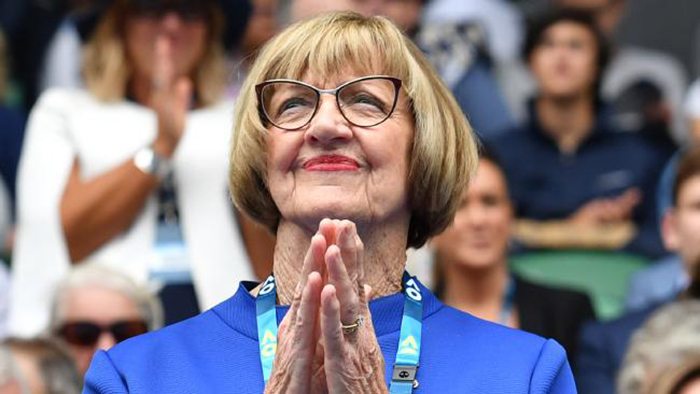
Marriage equality proponents draped themselves in rainbow flags at Margaret Court Arena on the first day of the Australian Open this Monday. Melbourne tennis arena has held Margaret Court’s name since 2003, but voices calling for its renaming are heard ever since. The latest controversy was stirred after Court said she would stop using Qantas airlines in protest of the airline’s promotion of same-sex marriage. The venue responded on Twitter stating that it didn’t support Court’s comments and it would remain “an organisation committed to embracing equality, diversity and inclusion”.
LGBTQ tennis players and inclusion then and now
Although the WTA tour has done little to acknowledge its LGBTQ legacy and has no pride initiatives, even as other sports organizations market rainbow-logoed merchandise, LGBTQ community is represented since the foundation of the association. For example, women's tennis was the first professional sport opened to transsexuals. In 1977 the New York Supreme Court ruled in favor of Renée Richards, a player who was denied entry into the US Open the previous year because she underwent male-to-female sex reassignment surgery.
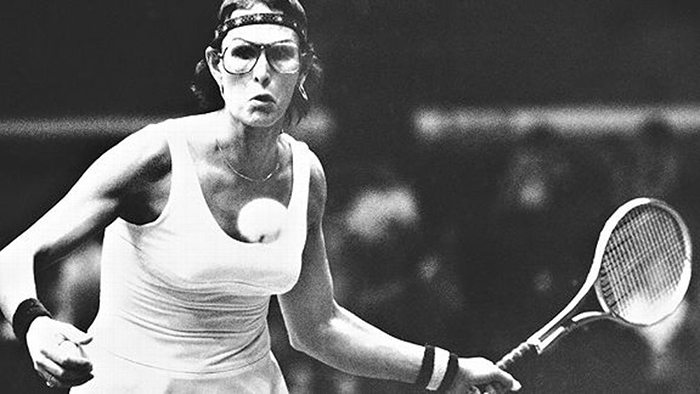
From the first lesbian tennis legends Martina Navratilova and Billie Jean King through the ’90s with Gigi Fernández (two times Olympic gold medalist and former women’s doubles world No. 1) and two-time Grand Slam winner Amélie Mauresmo, there has been a steady stream of high-profile LGBTQ women in the sport.
Mauresmo came out just before her first grand-slam final, at the age of 19, after stunning the Melbourne crowd by overpowering the American Lindsay Davenport, the number-one seed. Her coming out wasn’t fully cheered, moreover, some of her fellow players were even brutal: Davenport, possibly in a fit of pique at having been knocked out, said playing Mauresmo was like "playing a guy". Not known for her friendly diplomacy, Martina Hingis pitched in. "She is half a man," she told the press, before beating her in the final.
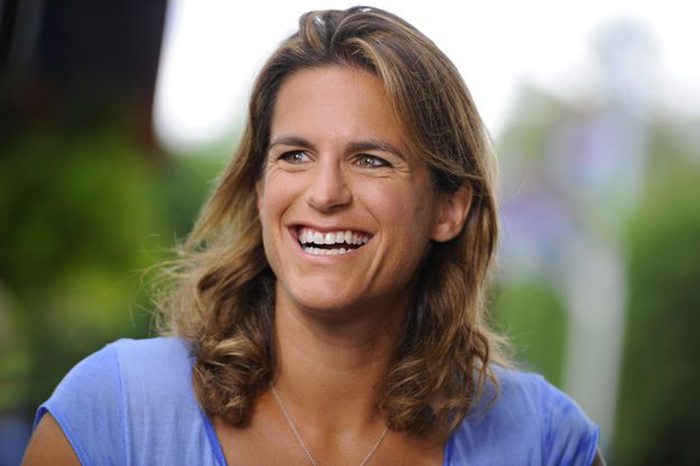
While gay stars in other sports like women’s soccer and women’s basketball have risen to prominence, the WTA has had no openly gay stars since the retirement of Mauresmo in 2009.
There are still some openly lesbian* tennis players nowadays, at least more than among the men, where no active player has come out as gay. The highest-ranked women’s singles player to come out is Johanna Larsson of Sweden, ranked No. 83. Larsson, 29, spoke publicly about her sexual orientation for the first time last year, telling Sweden’s national public broadcaster SVT that she had feared losing sponsors by living more openly.
Moreover, women’s tennis has an engaged couple as well: Tara Moore (No. 404) and Conny Perrin (No. 195), who got engaged last year, prefer to compete in doubles together. They say they are comfortable with the support they feel from other players and tennis governing bodies.
“I’ve never had a tennis player come up to me and say something negative,” Moore said. “They’ve all been supportive, or saying, ‘When’s the wedding — can I come?’ ”
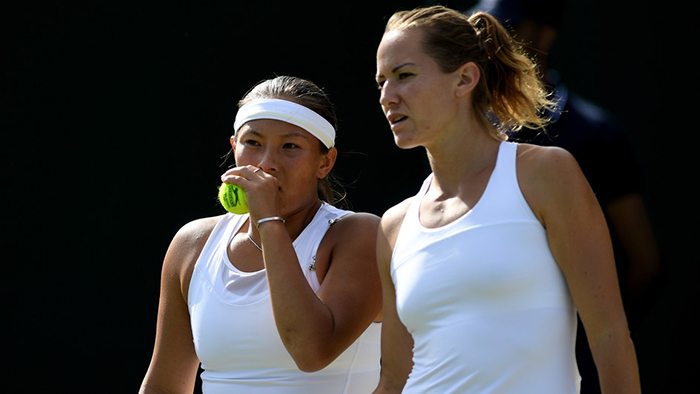
Moore said players who come out on tour now should expect to be met with reassuring apathy.
“People just don’t care,” she said. “I’m very open about things, and I want to be open about things, because then people are less inclined to speak behind your back about it. If you have a question about it, ask me. I don’t want it to be something that people think I’m scared, sad or upset about. We’re very open. This doesn’t make us any different.”

